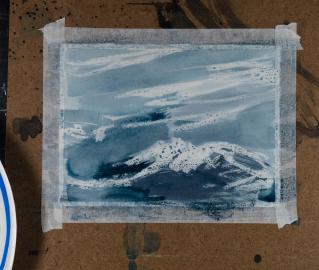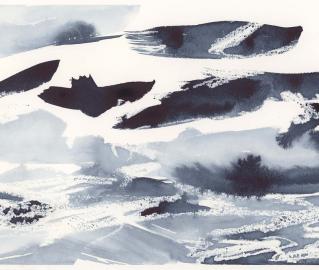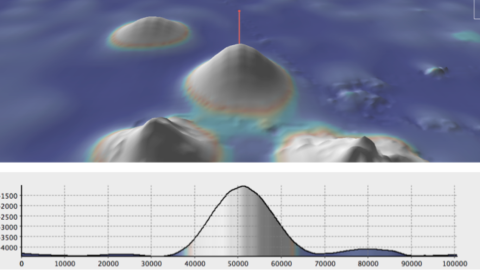Starting With the Surface: A Painter's Perspective at Sea

Daniel Kohn joins the Nautilus team as a 2017 Artist at Sea during the Heceta Bank Expedition and Mapping the Revillagigedo Archipelago. The Ocean Exploration Trust’s Artist at Sea program invites artists aboard E/V Nautilus to foster creative conversation and collaboration around curiosity-based exploration with Science Communication Fellows and the entire Corps of Exploration. Drawing inspiration from their time at sea, artists share their experiences with new audiences and support the Ocean Exploration Trust in integrating arts into outreach programs and shaping STEM education into STE[A]M education.
I am a painter. As painters, the surface of the canvas is the place where we project the discoveries we make with our senses and the place where we experiment with what we find. We use our sense perception and our experience as recording devices with which to probe the world. As I start out on my discovery of the ocean, I’m paying attention to what I perceive and what I use to perceive it.
Though I am interested in all of the ocean, I can only really begin with the surface of the water. Onto and through this surface I peer, trying to make note of things.
Though a painter, I will be using a variety of media to collect and to observe. Among these, sound, still photography, video, drawing and watercolor.
And I come to the sea with questions and find others along the way, like stepping stones, hopping from one idea to the next.

In my tool kit is the desire to ask questions, such as:
- What does the ocean look like? During the day, at night? In the morning and before a storm?
- How do ocean organisms perceive? With what senses?
- What brings the Nautilus team to sea, what are their reasons to be here past the science?
- How do people experience the physicality of being on the water, away from land, in the middle of the horizon?
- Looking at negative spaces, what data is not being gathered? What’s missing?
- What is the sound environment of the Nautilus?
What lingers at the edge of the recognizable? Here are some of the surfaces that have caught my attention:



Mapping Revillagigedo Archipelago
Moving south along the Baja California Peninsula, Nautilus will continue multibeam mapping operations in three areas to facilitate later explorations in the Revillagigedo Archipelago. The largest and highest priority area encompasses the island of Socorro and extends southwards along the Mathematician Ridge. The second and third areas encompass the islands of San Benedicto and Roca Partida, extending down their submarine slopes.




